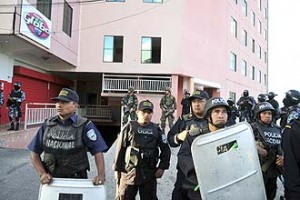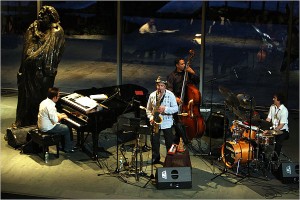Wed 30 Sep 2009

Women throughout Argentina cry out for help daily due to the horrific trafficking many of them fear or have suffered through. Women trafficking by definition is the illegal commerce and trade of people. It is essentially the facet of slavery which relies on direct purchase. The victims of human trafficking are used for prostitution, forced labor and other forms of involuntary servitude. Women trafficking is most common in the cities of Buenos Aires, Entre Rios and Tucuman in Argentina. These articles will explain how trafficking women is successfully accomplished, explore specific cases of victims and will address the amount of involvement the Government has in this issue.
Argentina is one of the most popular places for women trafficking. It’s seen as a business to many pimps, gang members and businessmen. In Buenos Aires, advertisements encourage women to be lured into the business of prostitution without even knowing it. However other women recognize the ads and convince themselves that it’s the answer to their problems. With over 40 percent of the population in poverty, prostitution is an easy and fast way to earn money. Many women result to this job in order to feed their families and give them a better life. Unfortunately having a degrading job isn’t the only downside of this business. Many of the women go into the business not knowing the amount of danger they put themselves in. Most cases of trafficking result in the women getting highly addicted to drugs or even worse, death.
There are numerous cases that have both happy and sad endings. In one specific case, a young 16-year-old girl named Otoño Uriarte was kidnapped and forced into a life that was unfamiliar to her. Being a minor, she was sold on the market for an extremely high price. Minors are rare but valuable because the younger the victim, the easier it is to get them addicted to drugs and the prostitution business. Although her story ended in a tragic death, her case was a breakthrough in the business of women trafficking. Between 5 and 10 years after her death, investigators were able to uncover evidence for the first time leading to the conclusion that there was in fact a connection between the police and the prostitution network. The police were being paid by not only the Government but also the traffickers to keep their mouths shut, avoid any investigations of missing people and in some cases even loaning their police cars out in order to make it easier to abduct women.
For years, the Government has done nothing but participate and encourage the progress of trafficking women. The Government was satisfied with the amount of money that was coming into the country and the power they were gaining over Latin America. What they failed to recognize was the damage that it was doing to their people. Although it is known that the Government has not taken the proper steps in improving the trafficking problem, in January of 2009 the Government under President Christina Kirchner was finally convinced that Argentina needed a change. Being a woman that was previously in office beside her husband, Nester Kirchner, she knew that human trafficking has been a reoccurring issue in Argentina. Kirchner tried her best to enforce numerous laws and distribute more money to investigating the police system. Unfortunately this plan was short sighted and there has been no evidence that a change has actually occurred.






 Can music lead to a life of drug dealing and violence? Well, I believe that the music played by the narco corridos in Latin America are doing just that. Their
Can music lead to a life of drug dealing and violence? Well, I believe that the music played by the narco corridos in Latin America are doing just that. Their 
